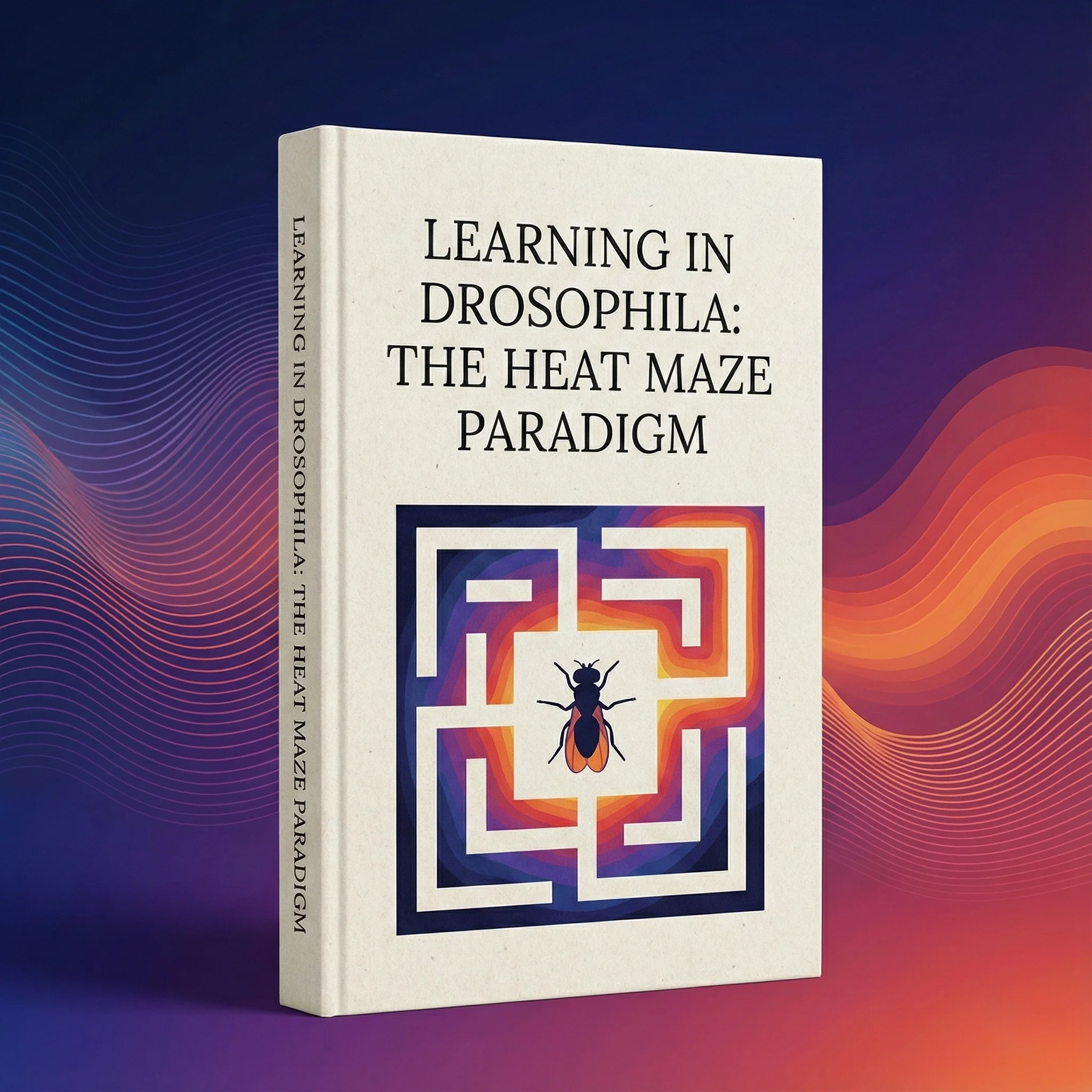
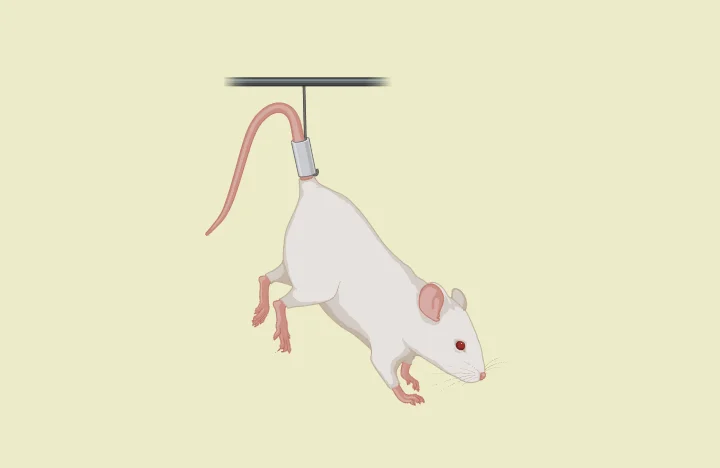
Figure: Tail Suspension Test
The Tail Suspension Test (TST) is a widely used behavioral assay to evaluate depressive-like states in mice. In this test, mice are suspended by their tails using adhesive tape, preventing them from escaping.
The standard tail suspension test lasts for approximately six minutes, during which the time spent in agitation versus immobility is recorded [1]. During the agitation period, the mouse actively struggles, twisting and curling in an attempt to free itself from the suspension. This behavior is driven by the discomfort of being hung upside down. In contrast, the immobile period is when the mouse ceases its efforts and remains passive. This state of giving up and not attempting to escape can be interpreted as a depressive-like behavior.


Although humans never experience a situation similar to the tail suspension test, feelings of depression in people can manifest as easily giving up on tasks and displaying a form of learned helplessness. This concept of learned helplessness is observable across various animal species, including rodents, indicating a broader applicability of this behavioral model in studying depression-like states.
Directly measuring immobility in the tail suspension test can be challenging because it involves assessing the absence of movement. To address this, Can et al. focused on the active movements of the mice instead. These active movements include behaviors such as shaking, reaching, and attempting to run. As the mice become fatigued, their movements become subtler, eventually involving only minimal actions like moving their front legs, which are not counted as active movement by the researchers. Additionally, if the mice are merely swinging as a result of previous movements, this too is not considered active movement.
Since the test runs for a fixed duration, researchers can measure the time the mice spend in active movement and then subtract this from the total duration to determine the immobility time [2]. This method provides a more straightforward and reliable way to quantify immobility and analyze the depressive-like behaviors exhibited by the mice.
The tail suspension test is particularly effective for assessing acute depressive-like behaviors. What makes this test especially valuable is its utility in evaluating the efficacy of antidepressant drugs. Various classes of antidepressants, including tricyclics, selective serotonin reuptake inhibitors (SSRIs), monoamine oxidase inhibitors (MAOIs), psychostimulants, neuroleptics, and anxiolytics, have been tested using this method [3].
In one study, researchers examined the effects of antidepressants such as imipramine, desipramine, fluoxetine, and venlafaxine at different concentrations [4]. The results showed that imipramine and desipramine consistently reduced the duration of immobility across all dosages compared to controls. Furthermore, higher doses of these drugs resulted in greater reductions in immobility. Fluoxetine and venlafaxine also reduced immobility, but their effects were significant only at certain concentrations, although they followed a similar pattern of decreasing immobility duration.
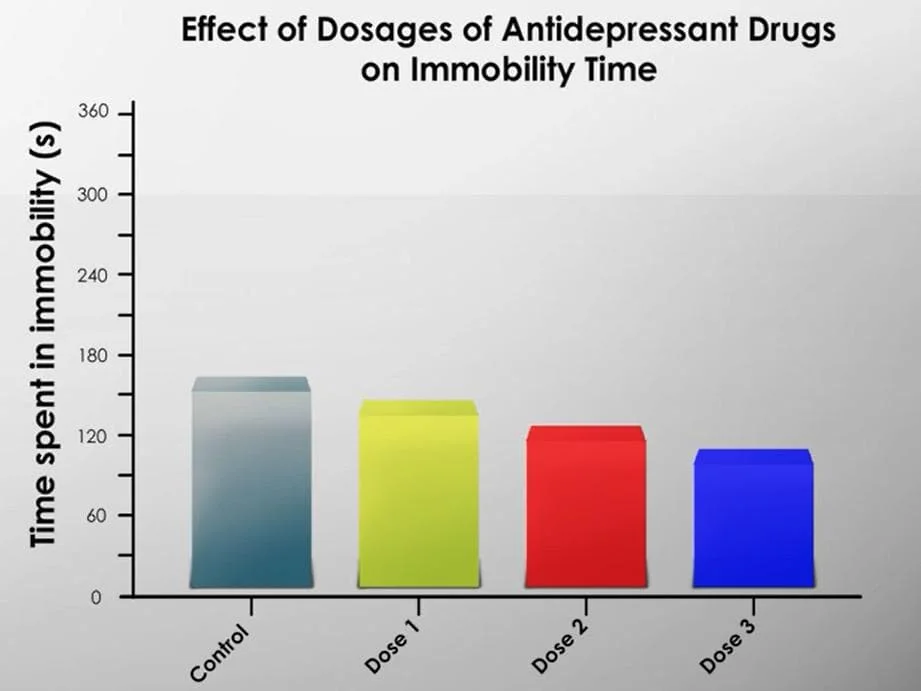
This study, along with numerous others, highlights two key points. First, the tail suspension test is a reliable method for assessing the antidepressant activity of various drugs. Second, the dose-response relationship observed in these tests helps in understanding the optimal concentrations required for maximum therapeutic efficacy.
The test can also be used for:
The tail suspension test is frequently compared to the forced swim test, another method that induces “behavioral despair” similar to the immobile period in the tail suspension test. In the forced swim test, the mouse is placed in a container of water and must continuously tread water to avoid drowning. Over time, the mouse starts to give up, reducing its movements to just enough to keep its head above water.
The tail suspension test is often preferred over the forced swim test for several reasons. Firstly, it avoids the risk of hypothermia, which can occur in mice during the forced swim test. Secondly, the tail suspension test is video recorded, allowing for automatic scoring rather than relying on human observation through water, which can be less accurate. Additionally, as demonstrated in various studies, the tail suspension test is more sensitive to detecting the effects of lower concentrations of antidepressant drugs, making it a more versatile and reliable method for evaluating the efficacy of these treatments.

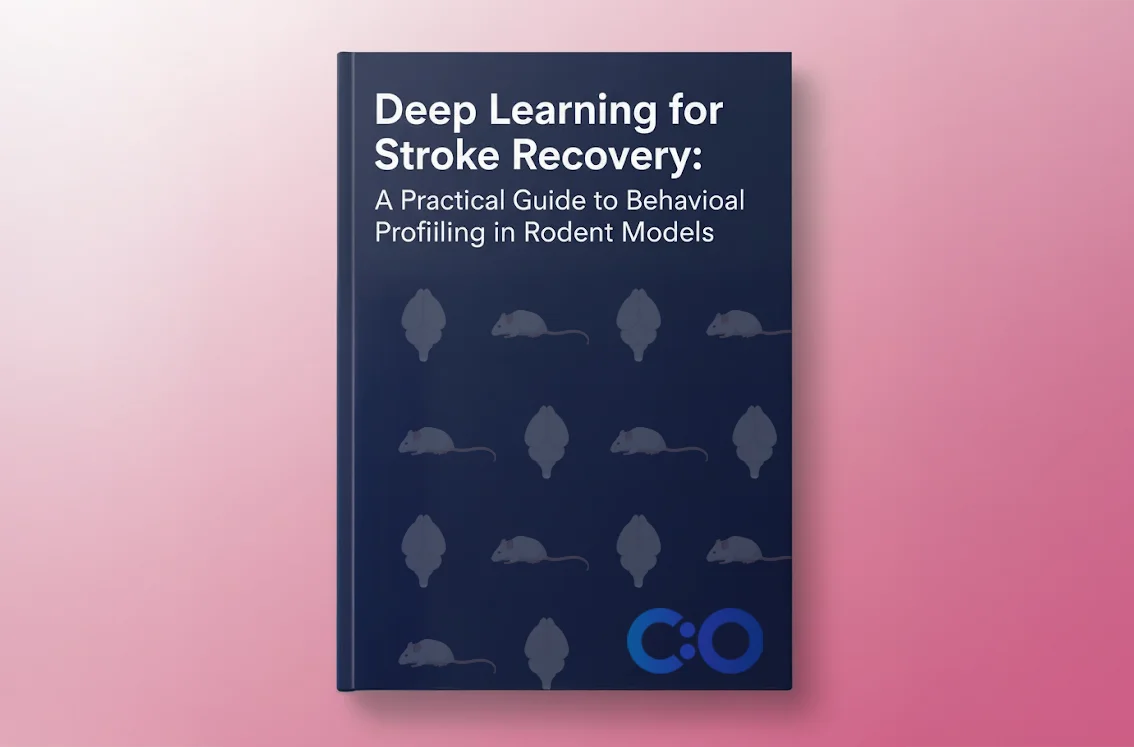



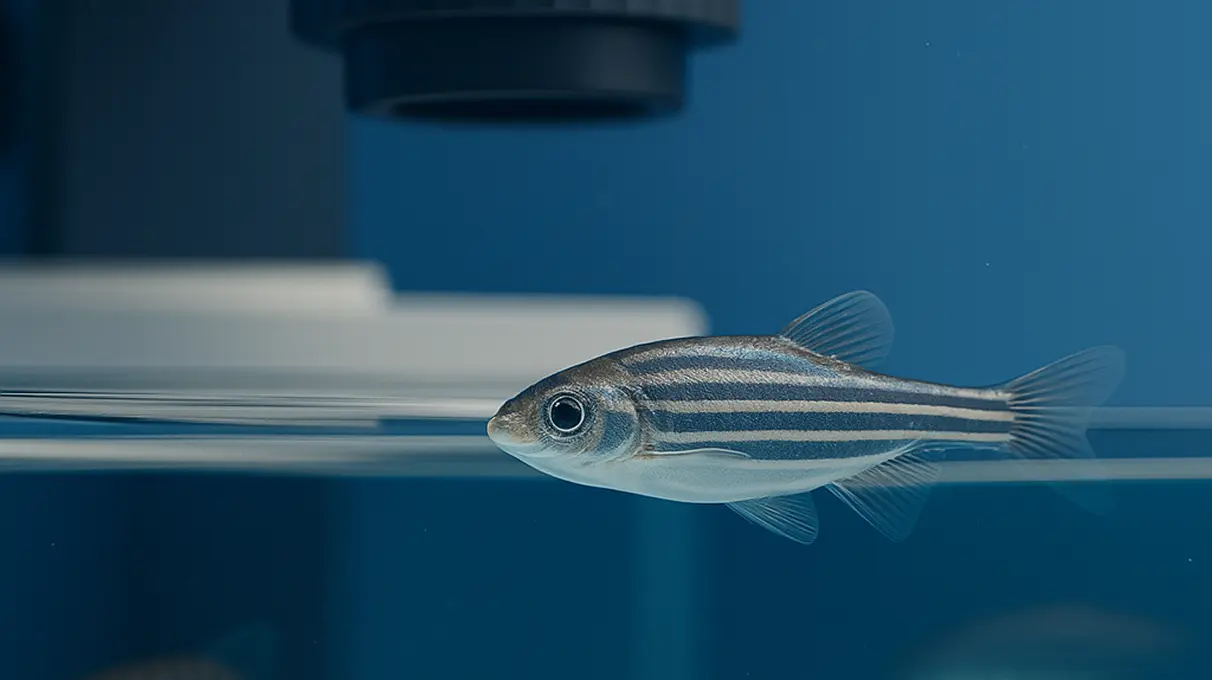


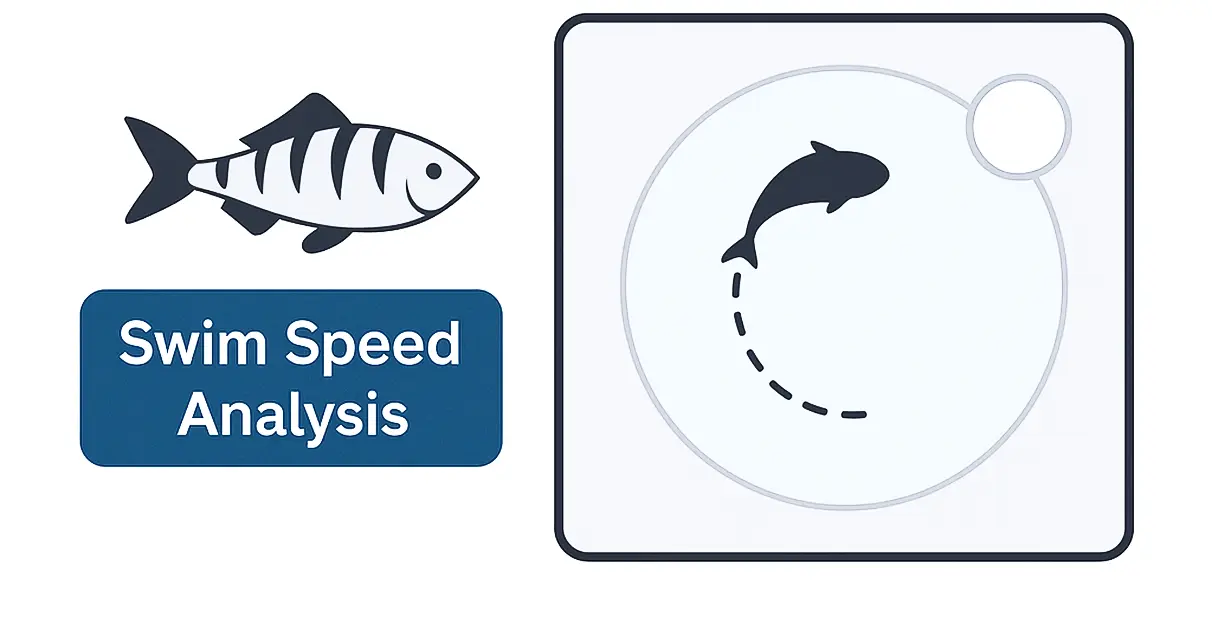


Vanja works as the Social Media and Academic Program Manager at Conduct Science. With a Bachelor’s degree in Molecular Biology and Physiology and a Master’s degree in Human Molecular Biology, Vanja is dedicated to sharing scientific knowledge on social media platforms. Additionally, Vanja provides direct support to the editorial board at Conduct Science Academic Publishing House.
